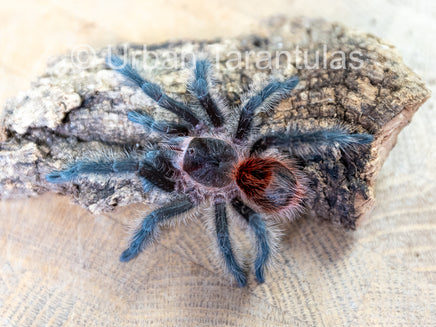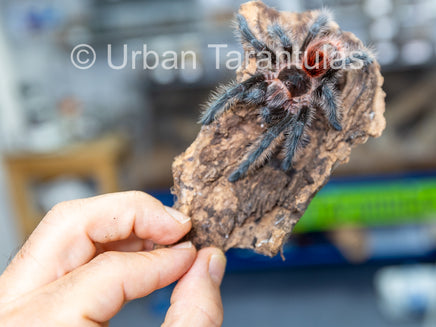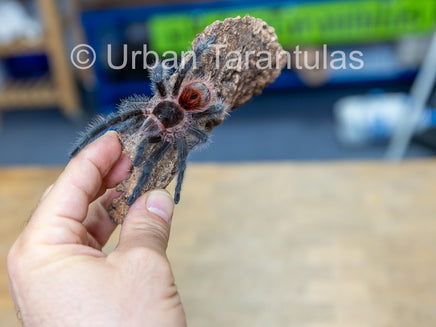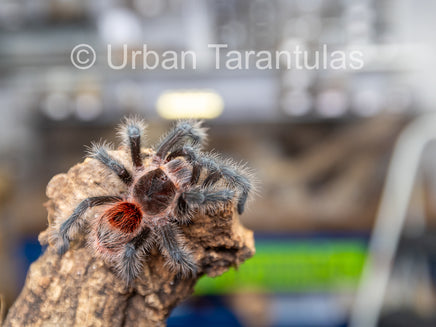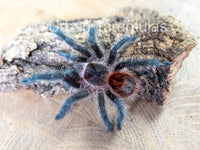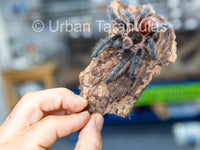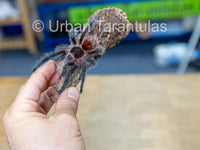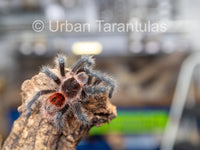Grammostola iheringi - Entre Rios Tarantula
Meet the Grammostola iheringi, commonly known as the Entre Rios Tarantula. This species is a true gem from South America, celebrated for its robust size and gentle nature. With its subdued earthy tones and a demeanor that makes it a favorite among tarantula keepers, the Entre Rios Tarantula is perfect for both beginner and seasoned enthusiasts looking to add a charismatic and sizable spider to their collection.
Care Details
- Temperature: Ideal range for most tarantulas is 75 to 85°F (24 to 29°C). Tarantulas in warmer environments eat more, grow faster, and molt quicker.
- Humidity: The Grammostola iheringi requires a humidity level of about 65-75%. Water dishes are not necessary, but if used, they pose no harm. I personally do not use them.
- Housing: As a terrestrial species, babies can be housed in 1 oz to 4 oz deli containers with needle-made ventilation. For juveniles and adults, an enclosure about 2 to 3 times their size will suffice. Don't forget to request your free deli container or small enclosure at checkout, but remember to specify this requirement during your purchase.
Diet
I personally provide a variety of crickets and cockroaches, including Dubia, Red-runner, Lobster, and Madagascar hissing roaches. For the baby tarantulas, baby crickets and baby roaches are ideal. If you can't find a small enough cricket or cockroach, just crush its head and leave it in the enclosure; your tarantula should handle the rest. Always remove any uneaten food to prevent mold growth. Occasionally, a pinky or hopper mouse can be offered as a treat, but keep these to a minimum to avoid health issues related to overfeeding.
In-depth Facts
- Latin name: Grammostola iheringi
- Common name: Entre Rios Tarantula
- Locale: Native to the regions of Entre Rios in Argentina
- Category: Terrestrial, minimal webbing
- Size: Females can reach up to 9 inches in leg span (largest species within this genus), with males generally much smaller.
- Urticating hairs: They possess urticating hairs, but hardly ever use them as a defense mechanism.
- Growth rate: Slow to moderate
- Life span: Females can live up to 25 years, with males living approximately 5-6 years.
- Recommended levels: Great for beginners due to their docile nature and ease of care.
Stay Connected:
- Instagram: Follow my Instagram, I'm most active here.
- YouTube: For care and education videos, check out my YouTube channel.
- Facebook: Over here I have all my reviews.
- TikTok: Visit my TikTok for additional content.
Safety Disclaimer:
Experiencing a tarantula bite is an extremely rare occurrence, and it's important to note that there have been no recorded fatalities due to a tarantula bite. The venom potency varies across species, with Old World tarantulas generally having stronger venom than their New World counterparts. Within the Old World category, the Poecilotheria genus is known for having particularly potent venom.
It's crucial to approach tarantulas with respect and understanding. If you happen to get bitten, which is unlikely, the key is to stay calm. In most cases, the discomfort is superficial and subsides within a few minutes to a few hours. However, bites from species with more potent venom may result in symptoms lasting up to a week. Remember, larger tarantulas tend to have more venom than smaller ones.
Please be aware that I cannot assume responsibility for bites. Tarantula handling should be done at your own risk. In my 11 years of experience with these creatures, I have only been bitten once, by a species with highly potent venom. While the experience was painful, the symptoms had completely disappeared after a week.
Handle tarantulas responsibly, and always prioritize your safety and the well-being of the tarantula.
